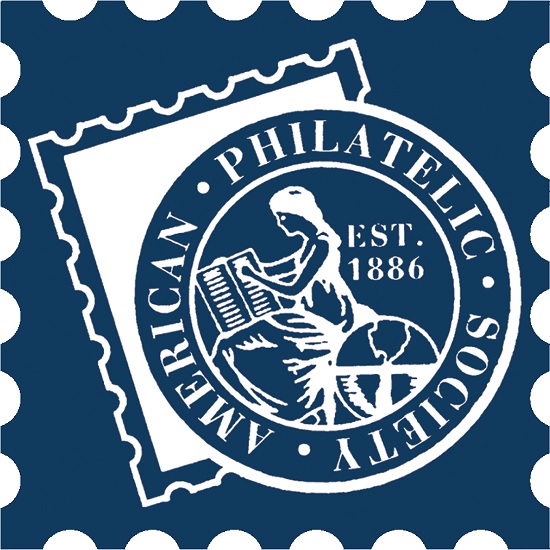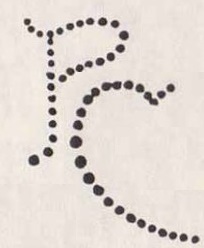Riverside Stamps

Return to Home Page or Altered and Faked stamps Index Page
|
The contents of
this website is copyright protected. Any suggestions for additions or changes are always welcome. |
Suspect Scott #533 Used Single (12/13/14).
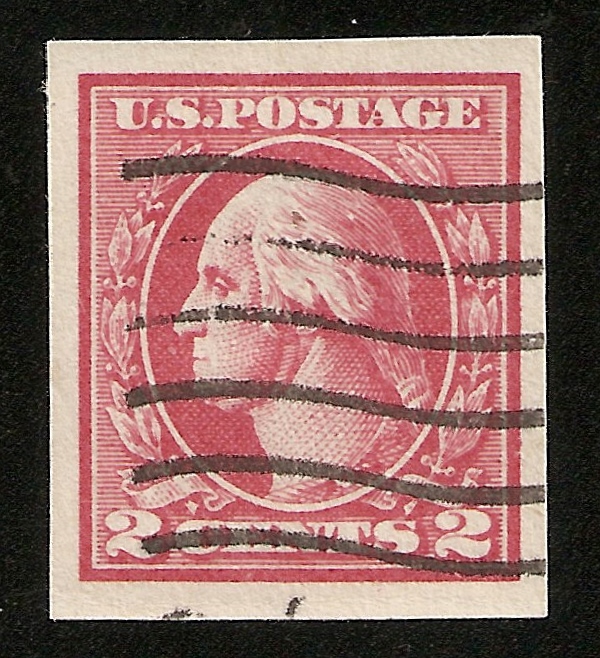
This issue is sometimes faked and can be made by trimming the perforations from a #527 (Type V), by altering the design of the #534 (Type Va) or by trimming the perforations and altering the design of a #528 (Type Va). This issue is moderately priced with a catalogue value of $90.00 for a used single.
The suspect is indeed an offset printing due to the lack of raised printed features when I dragged my tongs lightly across the horizontal lines in the upper left corner. Determining what type the suspect is it is a simple matter of looking at five features that determine a Type IV, Type Va, Type VII, and a Type VII. If the suspect does not show any of the features for the other types then the suspect must be a Type V.
First to look at is the toga button. The Type IV has a distinctive design resembling
. The following pictures
show the distinctive feature on the left and the same feature on the suspect on the right.
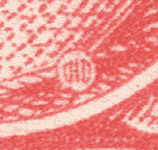 |
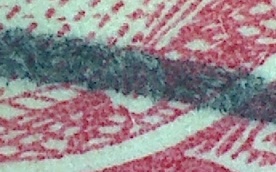 The suspectís toga button is obscured by the cancel, a close up shot is seen below. |
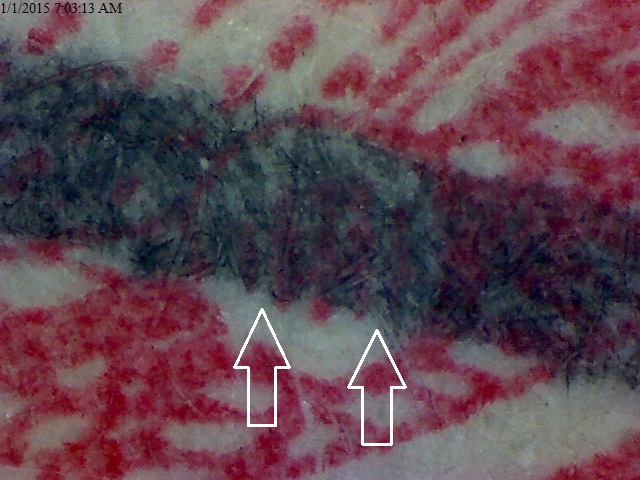
As can be seen in the close up shot there is enough of the bottom of the outside pair of lines to see that they are not connected and therefore the suspectís toga button does not resemble the Type IV toga button
The next feature to look at is the Type Va nose dots. There are seven rows of dots in Washingtonís nose and the fifth row of dots down from the top only has four dots instead of the usual five.
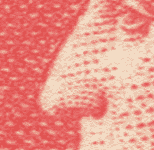 |
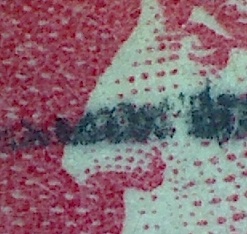 As can be seen from this image the nose dots are again obscured by cancel. Below is a close up shot of the nose dots. |
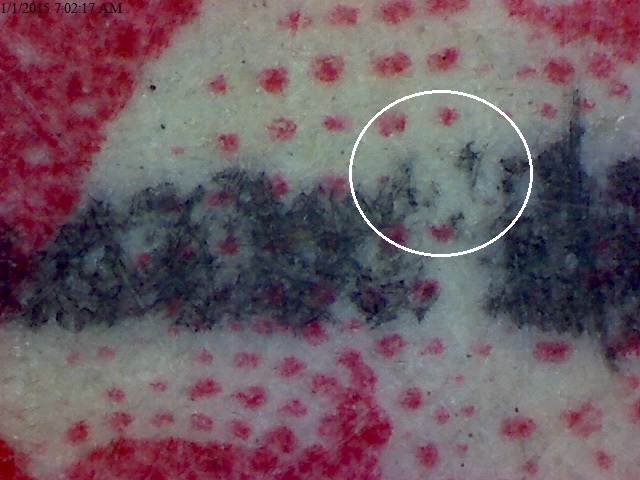
As can be seen here in the close up shot the fifth row of the suspectís nose indeed has four dots just like the four of the Type Va nose.
The next feature to look at is the ď2Ē at the left of CENTS.
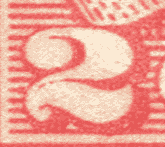 Type IV, V and Va |
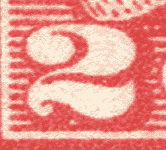 Type VI |
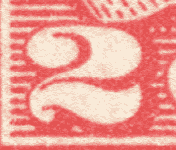 Type VII |

The center line of the suspectís left ď2Ē is weak like the Type IV, V and Va design.
The last features to look at are the dots in the upper lip and at the top of the head of a Type VII design. The upper lip will have four rows of three dots and the top of the head will wave numerous extra dots added.
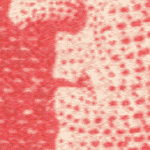 |
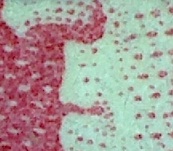 The suspectís upper lip has four rows of two dots instead of the four rows of three dots of the Type VII design. |
||
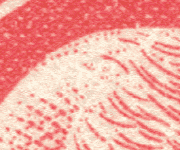 |
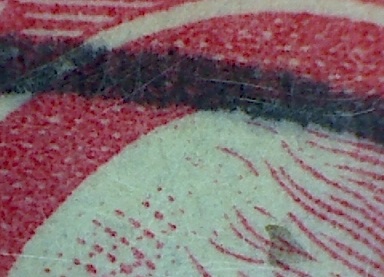 There are only a few dots at the top of the suspectís head which means the suspect is not a Type VII design. |
By virtue of the nose dots the suspect is definitely a Type Va design. For the moment letís say that the cancel on the nose completely obscured the nose dots making it impossible to determine if the fifth row dot was missing, can the suspects design type still be determined? Fortunately there is a way and it involves measuring the frame width of the suspect at the top and bottom as well as measuring the frame height.
The Experts Book states that the measurements of the Type V and Va are slightly different. The following table shows the differences:
|
All measurement in mm. |
Type V |
Type Va |
|
Height |
21.8 - 22.0 |
21.5 - 21.6 |
|
Width at Top |
18.9 - 19.0 |
18.6 - 18.8 |
|
Width at Bottom |
18.8 - 18.9 |
18.5 - 18.7 |
The following images show the suspectís actual measurements:
The suspectís height is just over 21.5mm
The suspectís width at the top is 18.75mm
The suspectís width at the bottom is just under 18.75mm
Without a doubt the measurements show that the suspect is indeed a genuine Type Va design which means at best the suspect is a #534 and at worst the suspect is a #528 that has had all of its perforations trimmed off. The height of the suspect ranges from 24.6mm to 24.75mm which is outside the confines of the horizontal perforations which at a minimum are spaced 23mm apart. The width of the suspect ranges from 21mm to 21.25mm which is just inside the confines of the vertical perforations which at a minimum are spaced 21.25mm apart. A search of the Philatelic Foundations certificate database returns 588 certificates of which three were sent in as a possible #533 but turned out to really be #534ís instead and one was declared a Type V but declined an opinion due to insufficient margins.
Conclusion: In my opinion the suspect is a Scott #534.
Reference material used:
- The Expert's Book. A practical guide to the authentication of United States stamps. By Paul W. Schmid.
As always comments and suggestions are always welcome.
To Contact Riverside Stamps:
Email:
Mike Girard - Owner / Operator / Web Master:
g1rardmn1099@comcast.net
|
I am a member of the American Philatelic Society
|
I am a member of the United States Stamp Society 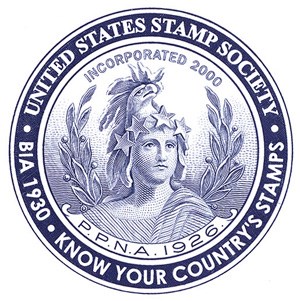 USSS #: 16733 Visit the United States Stamp Society Website at www.usstamps.org |
I am a member of the Perfins Club
|
